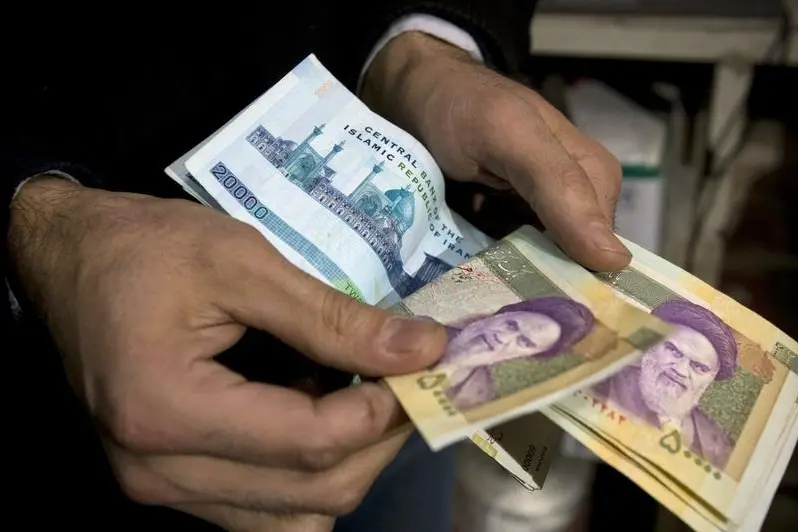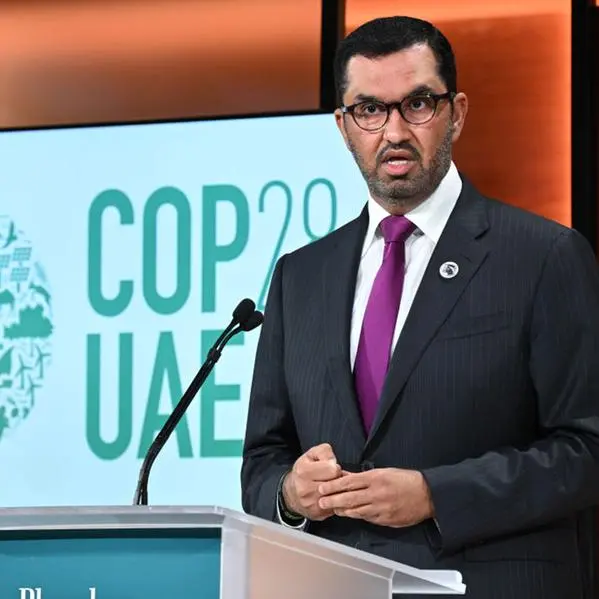PHOTO
* Economists expect Iran to borrow internationally this year
* Unlikely to make investment grade
* Economy has strengths and weaknesses
By Marc Jones
LONDON, Jan 28 (Reuters) - Low oil prices and the economic and geopolitical scars of years of international sanctions all point to a high risk 'junk' credit rating for Iran when it starts feeling its way back into borrowing markets.
With sanctions related to its nuclear programme now being lifted, Tehran is expected to start tapping bond markets in the next six to 12 months, to try and breathe new life into the second biggest economy in the Middle East.
A credit rating from one of the big three agencies, Standard and Poor's, Moody's or Fitch, while not essential, would help.
Ratings are a standard tool investors use to judge how likely they are to get their money back and also to gauge what incentive in terms of interest payments they should expect by comparing countries to others with similar scores.
The last time Iran had a rating almost a decade ago it was firmly in 'junk' grade territory at B2 with Moody's and had an equivalent B from Fitch, while the complex politics meant S&P never rated it.
Considering the impact of sanctions and the price of its key export, oil, as well as low levels of global growth and interest rates, investors are struggling to guage where the rating is likely to be this time around.
"We had Iran at B2 but a lot has changed since then, including our methodology, said Shirin Mohammadi, a sovereign analyst at Moody's covering the Middle East and Central Asia.
"Wealth levels have dropped under the sanctions, there has been a period of high inflation due to some monetary policy mismanagement which has come down now."
In terms of the economic fundamentals there are both pluses and minuses.
The 80-million-strong country is classified as middle-income with a well-educated population and has an annual economic output (GDP) of some $400 billion - larger than established frontier countries such as Thailand or South Africa.
Moody's estimates growth will pick up to 4-5 percent this year and one of the few upsides of the sanctions is that Iran's debt as a proportion of annual GDP is only 15-16 percent.
"That is fairly low, similar to the UAE, Kazakhstan, Russia and Chile," all of which have investment grade or close to investment grade ratings, Mohammadi said.
HIGH RISKS
But then there are the negatives. Nominal per capita income has dropped to $4,900 from $7,500 pre sanctions, similar to B1 and B3 junk rated Albania and Bosnia, and oil prices at $30 a barrel aren't helping as much as they could either.
Fitch said recently it expected Iranian oil and gas production to take years to get back to previous peaks, though it would not comment on any potential sovereign rating.
In terms of political stability, corruption and rule of law, Mohammadi at Moody's said Iran was something of a mix of Thailand, Guatemala, Honduras, Ecuador, Mongolia and Indonesia, which on average would also suggest a non-investment rating.
"Political and geopolitical risk would probably be one of the higher risks of Iran," she said, also highlighting the war of words going on with Saudi Arabia.
Rating agencies steer clear of early estimates of the score they are likely to give a country for fear of impacting markets.
Some investors are only willing to buy bonds rated investment grade. Others will take the risk of bonds rated below that but only if interest rates are high.
The rating creation process can take from a couple of weeks to a couple months depending on the circumstances, although there has been no signal yet from either Tehran or the ratings firms that a request has been made to get the ball rolling.
In the meantime Iraq is seen as another obvious comparison. S&P gave it a B-, which is nine notches into junk, when it assigned its first rating back in September.
Baghdad is also laying the ground for a return to bond markets, but postponed in October after it became clear investors would demand a hefty 11 percent yield.
The two countries have relatively similar amounts of oil, but in many ways they are very different. Iran's economy is almost double the size of Iraq's for example and unlike Iraq, it has not lost territory to Islamic State militants.
Various incarnations of sanctions have forced Tehran to diversify its economy and apply the kind of taxes others in the region are now considering.
Moritz Kraemer, head of EMEA sovereigns at Standard and Poor's, said there were too many legal and economic complications for his firm to give a view on Iran. "My hunch is that it will not be investment grade, but that is not saying much," he said. (Editing by Philippa Fletcher) ((marc.jones@thomsonreuters.com; +44)(0)(207 542 9033; Reuters Messaging: marc.jones.thomsonreuters.com@reuters.net Twitter @marcjonesrtrs))
Keywords: IRAN RATINGS/
* Unlikely to make investment grade
* Economy has strengths and weaknesses
By Marc Jones
LONDON, Jan 28 (Reuters) - Low oil prices and the economic and geopolitical scars of years of international sanctions all point to a high risk 'junk' credit rating for Iran when it starts feeling its way back into borrowing markets.
With sanctions related to its nuclear programme now being lifted, Tehran is expected to start tapping bond markets in the next six to 12 months, to try and breathe new life into the second biggest economy in the Middle East.
A credit rating from one of the big three agencies, Standard and Poor's, Moody's or Fitch, while not essential, would help.
Ratings are a standard tool investors use to judge how likely they are to get their money back and also to gauge what incentive in terms of interest payments they should expect by comparing countries to others with similar scores.
The last time Iran had a rating almost a decade ago it was firmly in 'junk' grade territory at B2 with Moody's and had an equivalent B from Fitch, while the complex politics meant S&P never rated it.
Considering the impact of sanctions and the price of its key export, oil, as well as low levels of global growth and interest rates, investors are struggling to guage where the rating is likely to be this time around.
"We had Iran at B2 but a lot has changed since then, including our methodology, said Shirin Mohammadi, a sovereign analyst at Moody's covering the Middle East and Central Asia.
"Wealth levels have dropped under the sanctions, there has been a period of high inflation due to some monetary policy mismanagement which has come down now."
In terms of the economic fundamentals there are both pluses and minuses.
The 80-million-strong country is classified as middle-income with a well-educated population and has an annual economic output (GDP) of some $400 billion - larger than established frontier countries such as Thailand or South Africa.
Moody's estimates growth will pick up to 4-5 percent this year and one of the few upsides of the sanctions is that Iran's debt as a proportion of annual GDP is only 15-16 percent.
"That is fairly low, similar to the UAE, Kazakhstan, Russia and Chile," all of which have investment grade or close to investment grade ratings, Mohammadi said.
HIGH RISKS
But then there are the negatives. Nominal per capita income has dropped to $4,900 from $7,500 pre sanctions, similar to B1 and B3 junk rated Albania and Bosnia, and oil prices at $30 a barrel aren't helping as much as they could either.
Fitch said recently it expected Iranian oil and gas production to take years to get back to previous peaks, though it would not comment on any potential sovereign rating.
In terms of political stability, corruption and rule of law, Mohammadi at Moody's said Iran was something of a mix of Thailand, Guatemala, Honduras, Ecuador, Mongolia and Indonesia, which on average would also suggest a non-investment rating.
"Political and geopolitical risk would probably be one of the higher risks of Iran," she said, also highlighting the war of words going on with Saudi Arabia.
Rating agencies steer clear of early estimates of the score they are likely to give a country for fear of impacting markets.
Some investors are only willing to buy bonds rated investment grade. Others will take the risk of bonds rated below that but only if interest rates are high.
The rating creation process can take from a couple of weeks to a couple months depending on the circumstances, although there has been no signal yet from either Tehran or the ratings firms that a request has been made to get the ball rolling.
In the meantime Iraq is seen as another obvious comparison. S&P gave it a B-, which is nine notches into junk, when it assigned its first rating back in September.
Baghdad is also laying the ground for a return to bond markets, but postponed in October after it became clear investors would demand a hefty 11 percent yield.
The two countries have relatively similar amounts of oil, but in many ways they are very different. Iran's economy is almost double the size of Iraq's for example and unlike Iraq, it has not lost territory to Islamic State militants.
Various incarnations of sanctions have forced Tehran to diversify its economy and apply the kind of taxes others in the region are now considering.
Moritz Kraemer, head of EMEA sovereigns at Standard and Poor's, said there were too many legal and economic complications for his firm to give a view on Iran. "My hunch is that it will not be investment grade, but that is not saying much," he said. (Editing by Philippa Fletcher) ((marc.jones@thomsonreuters.com; +44)(0)(207 542 9033; Reuters Messaging: marc.jones.thomsonreuters.com@reuters.net Twitter @marcjonesrtrs))
Keywords: IRAN RATINGS/











